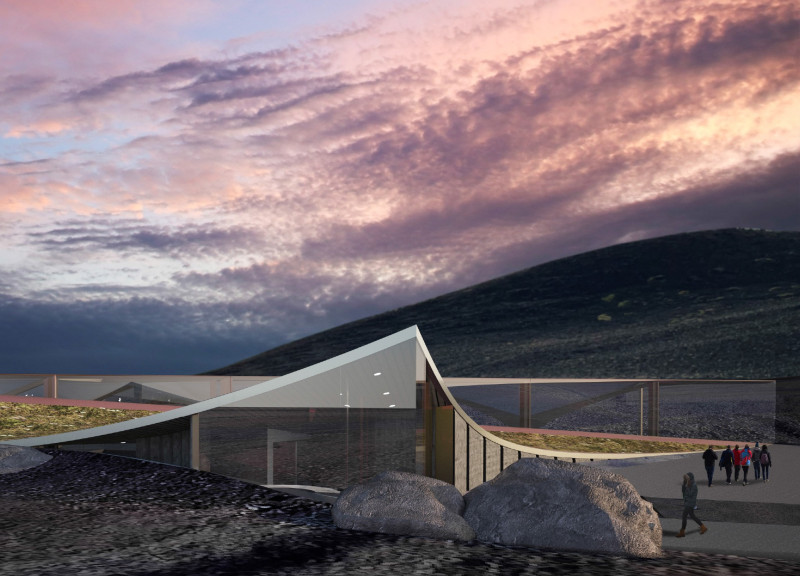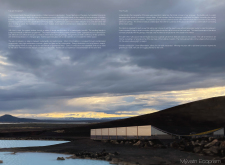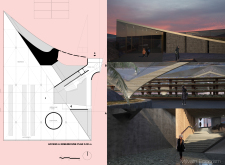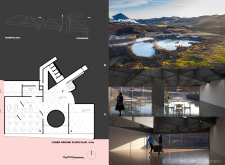5 key facts about this project
Unique Architectural Form
The Myvatn Ecoprism features a distinctive geometric design characterized by triangular forms that reflect the natural topography of the site. The building is structured as a quadrangulated monolith, a concept that allows for a versatile interior layout while maintaining a cohesive exterior aesthetic. This shape captures both the visual appeal of the landscape and facilitates the building's performance in terms of energy efficiency and structural integrity.
The project's integration of large glass sections maximizes natural light and offers expansive views of the landscape, creating a strong connection between interior and exterior spaces. This design approach enhances the experience of the occupants and visitors alike, aligning with the architects' goal of blending the built environment with nature.
Sustainable Material Use
The choice of materials in the Myvatn Ecoprism reflects a commitment to sustainability and resilience. High-performance concrete is used for its durability and thermal mass, while glulam provides structural strength and aesthetic warmth. The building incorporates insulative materials that support energy efficiency, essential for a region with varying climate conditions. Additionally, the green roof system not only minimizes the visual impact of the building on its surroundings but also supports local biodiversity.
Innovative use of geothermal systems allows the project to harness renewable energy, further enhancing its ecological credentials. This integration exemplifies a broader trend in architecture that prioritizes sustainability through local resource utilization.
Community Engagement and Educational Focus
Aside from its architectural significance, the Myvatn Ecoprism is designed to bolster community interaction. The multifunctional spaces are intended for various activities, fostering social engagement and educational initiatives centered around environmental awareness. This emphasis on community use distinguishes the project from typical architectural endeavors that often focus solely on aesthetic or functional elements.
For a comprehensive understanding of the design and architectural intent behind the Myvatn Ecoprism, readers are encouraged to explore project presentations, which include detailed architectural plans, sections, and various design concepts that offer deeper insights into this innovative architectural project. Exploring these elements will provide a clearer picture of how the Myvatn Ecoprism stands as a notable example of modern architecture that successfully integrates human use with the natural environment.


























